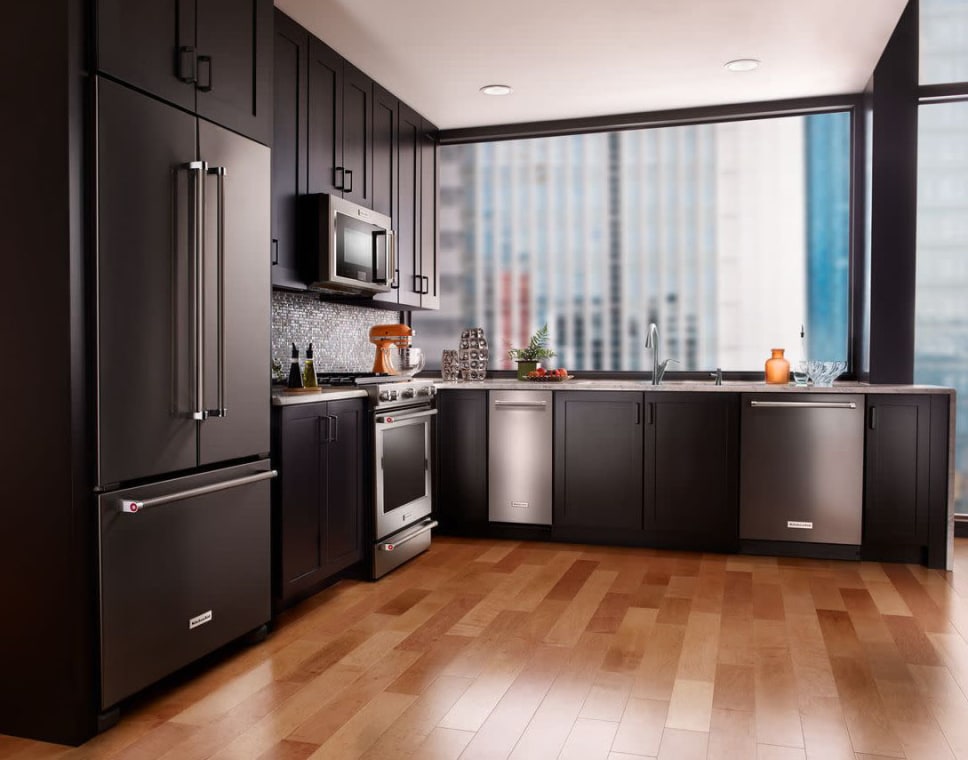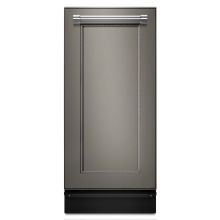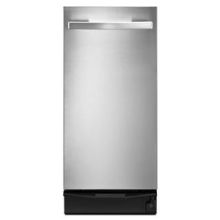How Does a Trash Compactor Work?
Learn how a trash compactor can save you time, energy, and money

According to a 2013 EPA statistic, the average American produces about 4.4 pounds of trash every single day. This statistic has many ramifications, not the least of which is the immediate need of taking out the trash pretty often! If you're looking for something that will reduce your carbon footprint, make your life a little bit easier, and help you to keep costs down on household supplies, it’s time to seriously consider a trash compactor. Let’s explore what it does, how it works, and how it can benefit your household.
What Is a Trash Compactor?
A trash compactor is a self-contained, motorized device that compresses the garbage inside its bin. Models can vary by brand but each will consist of these basic elements: a trash drawer with a safety latch and removable bin, a ram or plate which compresses the refuse, and a motor. It can be installed under a counter or sit independently anywhere in a room. Trash compactors are generally considered to be a kitchen appliance but can be used anywhere, in theory, although there are certain limits you may want to place on what will be deposited which may determine where you’ll want it placed.
How Trash Compactors Work
When trash is placed into the bin and closed and latched properly, it can then be turned on. The motor will not turn on if the safety latch isn’t engaged. The motor runs, pushing a compressor plate down to reduce the volume of the garbage as much as possible. The compactor bin contains the mess with a lining that is usually made of plastic, although paper alternatives with special liquid-containing liners are available. Those liners allow the compactor to work without creating a mess, and they make it easy for the bin to be emptied when it is full. These liners typically cost a bit more than average trash bags but are stronger and will contain more garbage.
Step By Step Trash Compactor Operations
When you install a trash compactor in your home, you can expect the daily operation of your new appliance to work something like this:
- An empty compactor is loaded with a liner bag. Most of the time, this loads from the side, making it essential that you install the compactor in a place with the right clearance.
- As you throw items away, regular compacting increases the amount of garbage that can be contained in a single trash bag, reducing the cost of liners.
- When the compactor can no longer reduce the volume of the trash to make room, the operator can slide the drawer forward to remove the full liner bag.
Properly operating trash compactors will generally not need to be cleaned because the liner bags are designed to keep the motorized components from direct contact with the garbage. As well, many models include components like charcoal filters to reduce any odors the trash may cause.
Planning for a Trash Compactor Installation
Before adding a trash compactor to your kitchen, the first step is to determine where you want to locate it. Trash compactors are made to standard countertop heights and depths, but they have different widths, so it is important to be aware of the model you are buying and the space needs it will require. Once you have planned the location, it’s a matter of finding a retailer that carries the compactor which suits your needs. Before the delivery of your compactor, you’ll need to prepare the area in which it is to be installed. There are a few simple things you should know:
- The kitchen cabinets need to be removed from the desired spot before the installation.
- You will need to make sure there is access to an outlet behind the trash compactor. Typically, the cord can be run to the same outlet you use if you have a garbage disposal or a dishwasher. Trash compactors generally only require a 120 volt electrical outlet.
- You might need to make use of a heavy-duty extension cord if the stock cord is too short to be run to the outlet you have available.
- Make sure you follow your manufacturer’s installation guide for instructions about how to best secure your new trash compactor in place. All models are a little bit different, so this is an important point.
It’s important to remember that you can purchase a trash compactor without planning to install it under the counter. Similar to dishwashers, there are trash compactor options designed to provide you with convenience and portability. It’s also possible to find alternative installations for traditional models.
Alternatives to Kitchen Installation
Because not everyone prefers to house trash or has space for another appliance in the kitchen, you can also easily find room for a trash compactor in a mudroom or a pantry. The only requirements are space and an outlet. This gives you the versatility to keep it where it will be most convenient, even if that happens to be an enclosed porch, garage, or another out of the way area of your home.
Planning for Your Trash Compactor Purchase
If you are considering adding a trash compactor to your household appliances, know that it will soon pay for itself. The day-to-day operation of the device tends to be less costly than the additional bags and higher tier trash service that people generally need without the benefit of a trash compactor. The liner bags for the compactor do tend to cost a little more than traditional trash bags, but they also hold more, so you’ll need to buy bags less often. As well, the electric cost of running a compactor is negligent because operation of the mechanical parts is infrequent enough to minimize its impact on your power bill.
Final Thoughts
A trash compactor can be a great investment, especially in a household where emptying the garbage frequently could cause a hardship, like for those who live several floors above a building’s trash room, those with mobility impairments, and those who want to go down a size on their trash bin rental. It can also be a great reminder to sort your trash, recyclables, and compostables. You’ll be amazed at how much less trash you’re producing just by taking a moment to think about what is recyclable, sorting it out, and compacting the trash.
No matter what your reasons, a compactor is a great way to handle both solid and liquid garbage while minimizing its footprint in your home and in landfills.



